The gesture of folding hands is a qualified and famous social etiquette in many countries, cultures, and religions of the world. Each pair of palms that come together may mean different things to different people. But, they’re all rooted in their own substantial amount of value and significance.
In most cultures, a set of folded hands suggests a manner of greeting, praying, expressing gratitude, and politeness. Folded hands are also a part of relaxing and meditative practices such as yoga, which surpass most barriers of division, on the global level.
It’s incredible, indeed, how this common and mundane gesture has come to signify so much in our lives. It is so popular, that folded hands have even been honored as an emoji. Read on to know more about this wonderful gesture, all that it stands for, and how to use its emoji.
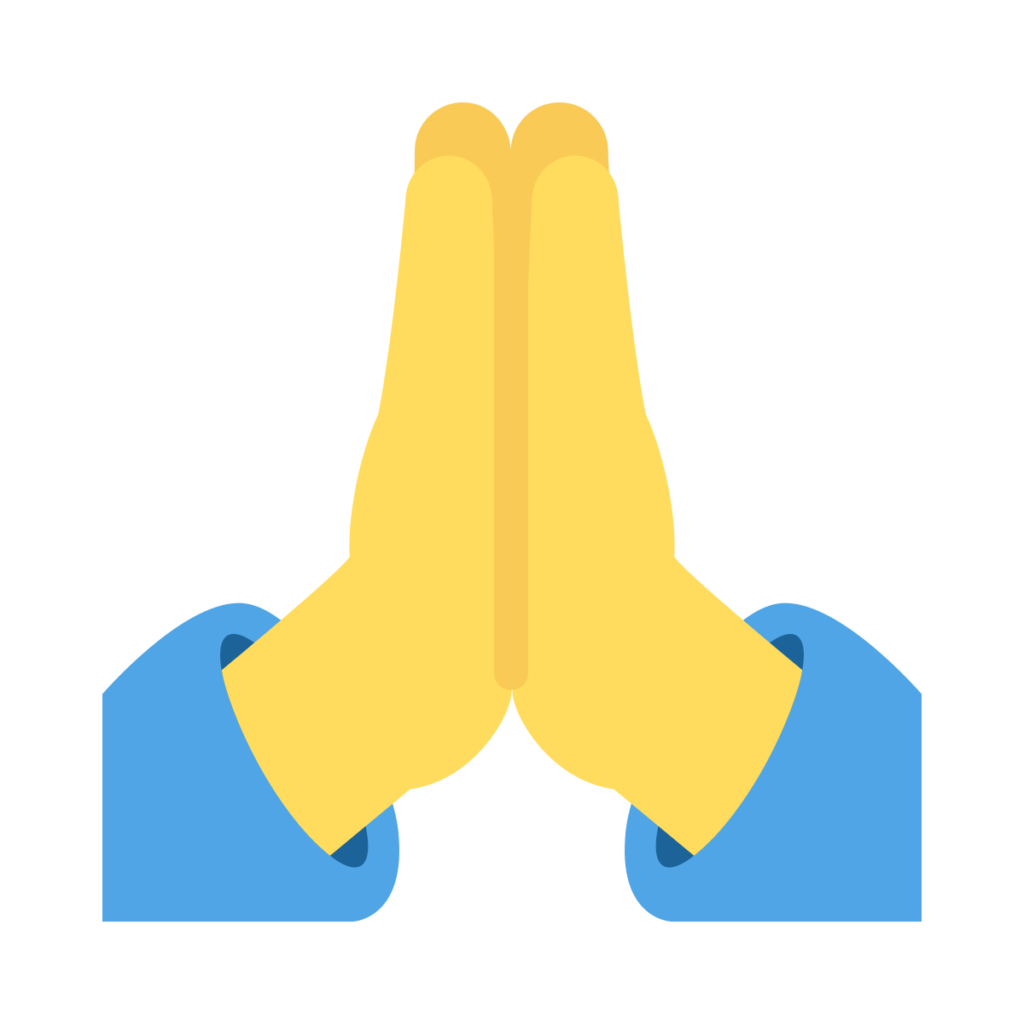
Meaning of 🙏
The 🙏 Folded Hands emoji is a two-hand gesture that signifies respect and gratitude in some cultures. It’s a mark of prayer and devotion in some religions and is a recognized yogic hand sign as well.
Besides, this emoji also suggests a respectful manner of pleading, begging, seeking, or asking for something too, which could involve some intentional or unintentional sarcasm at times.
In few places, this emoji is also a sign of hope and a gesture of communicating a hopeful attitude. 🙏 may be viewed and used as a high-five as well, but that is generally not the mainstream interpretation of 🙏.
What 🙏 Means to Different People
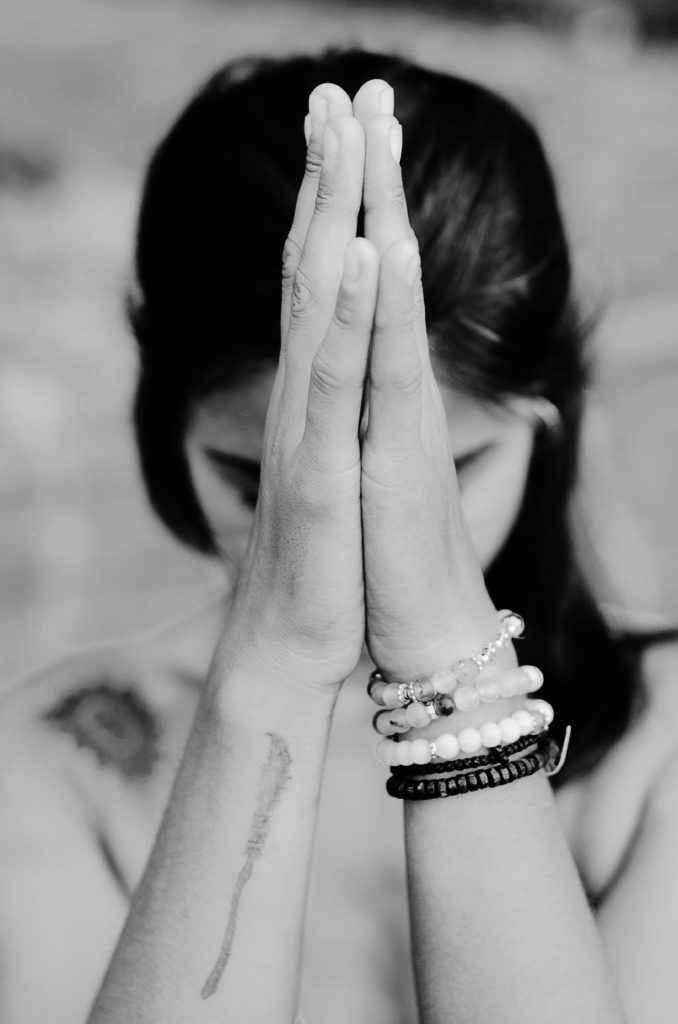
To the religious folks: Many religions fold their hands in prayer, devotion, and worship. It’s almost a universal sign of submission and respect that’s often preceded by or carried alongside a verbal prayer, mantra, or any utterance that has religious reverence attached to it.
To the yogis: Or people who practice yoga, 🙏 is the anjali mudra. It’s the gesture of bringing together the right and the left hemispheres of the brain. It’s a popular posture, extensively used in yoga and among yogis. This mudra is also an active part of almost every yogic posture.
To the Indian folks: These prayerful hands are recognized and expressed as namaste, namaskar, and namaskaram in India. It’s a formal, respectful, and polite manner of greeting someone in the country and is also a gesture that’s frequently synonymous with the nation and its nationality.
To the Japanese and Chinese Folks: North Asian countries like Japan and China exercise this gesture with similar attitudes of respect and formality. In China, a pair of folded hands is also read as a salute, one that conveys harmlessness and goodwill. It’s a mark of amiability.
Why 🙏 Means All That it Does
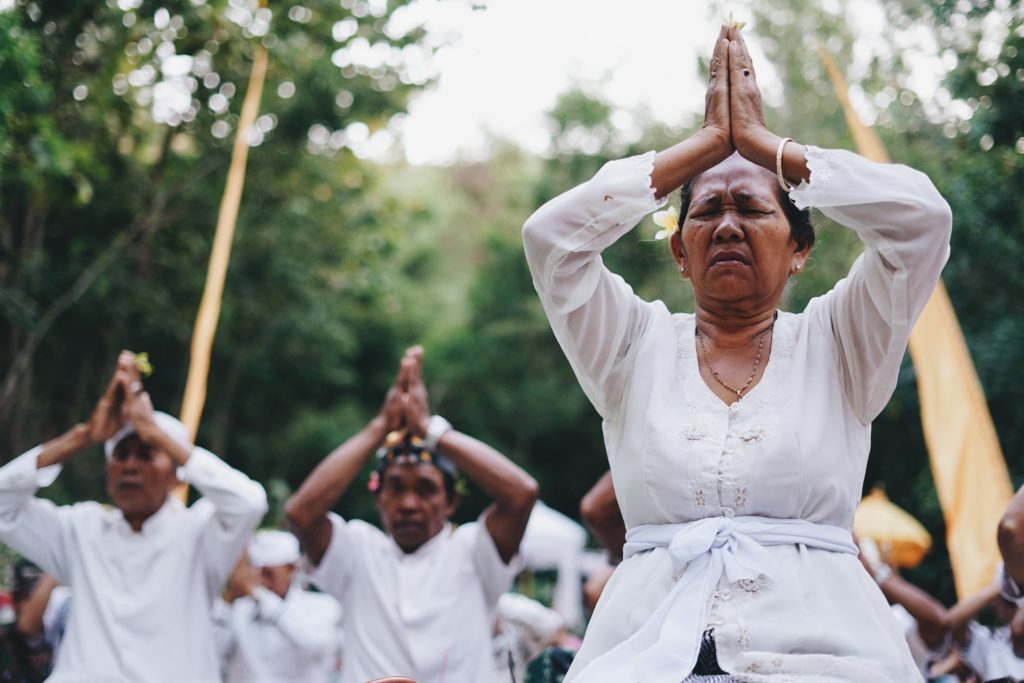
Different countries fold their hands in different social scenarios and for varied but valid reasons. But all of them have a common expression; regard or respect. Folding hands is the ubiquitous way of being welcoming, thankful, well-mannered, civil, and of course, respectful.
But why?
Harmlessness/ Goodwill/ Amicability
The reason behind 🙏 being the sigil of harmlessness could lie in the fact that both hands present themselves in all honesty. There’s nothing kept from plain sight at least by the hands.
The person is clearly not hiding anything behind themselves, like a weapon, poison, essentially anything that could harm. So, going by this open gesture, 🙏 may have come to mean goodwill and trustworthiness.
Namaste
Namaste, as mentioned earlier, is an Indian way of greeting. It’s a welcoming gesture that’s heavily embedded in the Indian religion of Hinduism. The reason behind this word and its corresponding body language lies in the name and importance of this gesture in an Indian context.
The word ‘namaste‘ is derived from Sanskrit, an ancient Indian language. Namaste, when divided in its root language, breaks into two parts ‘namas‘ and ‘te‘. The former means to bow, revere, submit, salute and obey, while the latter stands for the second person; you. So, when translated, namaste virtually means bowing to you or submitting to/saluting/obeying you.
The present use case of 🙏 namaste evokes politeness, warmth, and positivity. A namaste is a mark of humbleness than obedience, submission, and subordination. When one folds their hands in a namaste, there’s an instant dismissal of the ego. There’s only gratitude and reverence.
Anjali Mudra
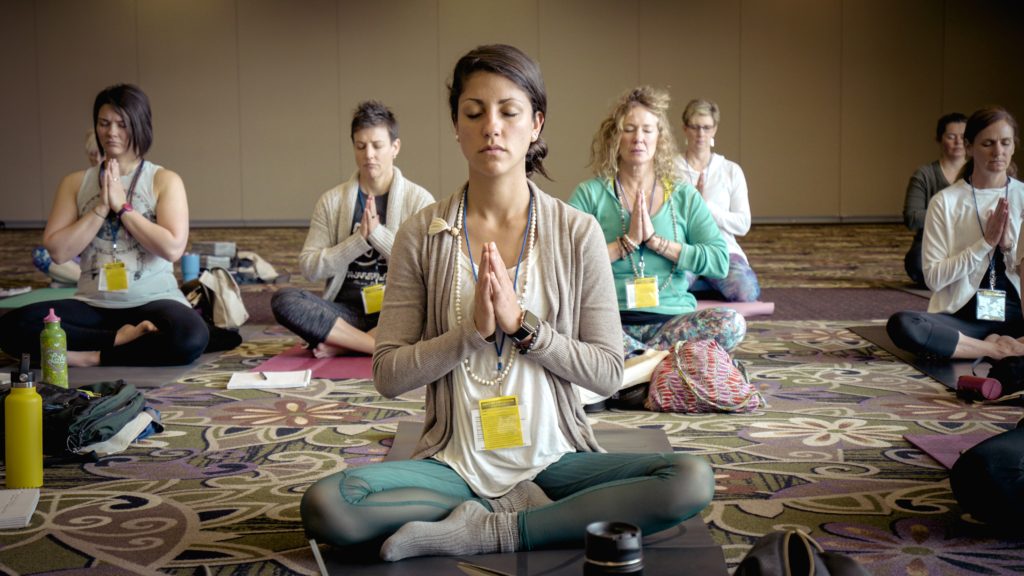
The gesture of folding one’s hands is only identified and known with different names and respective significance in various contexts. The gesture in itself is always the same.
In yoga, 🙏 is called the anjali mudra. It’s a powerful yet subtle and super simple asana. All you need to do to execute this asana is, bring your palms together, close to the chest, spread your arms out a little, and steadily hold and point all fingers upwards. 🙏 is a meditative posture and is used in many other asanas too.
If we were to talk about ‘namaste’ in the context of the anjali mudra, then the former would translate to bowing down to the divinity in you or saluting the divine in you. The anjali mudra is an intentional and mindful way of folding one’s hands.
This gesture brings both hemispheres of the brain together, in harmony, unity, and increased awareness. It’s also a manner of sealing one’s energy within the self and eventually transferring that energy with a namaste.
Prayer
The reason why 🙏 is associated with prayer is the very reason why it’s used at all. Respect, submission, and humility are what make 🙏 a prayerful position. When one bows down in prayer, there’s a natural state of pleading that we go into. We’re at the mercy of the higher power.
So, when we’re asking for something, be it forgiveness, more money, more power, more, or less of anything, we need to be grounded. Arrogance will only lessen our chances for mercy and grace. Hence, 🙏 comes in handy when you’re talking to the higher self. Or so we’re taught.
When Should You Use the 🙏 Emoji?
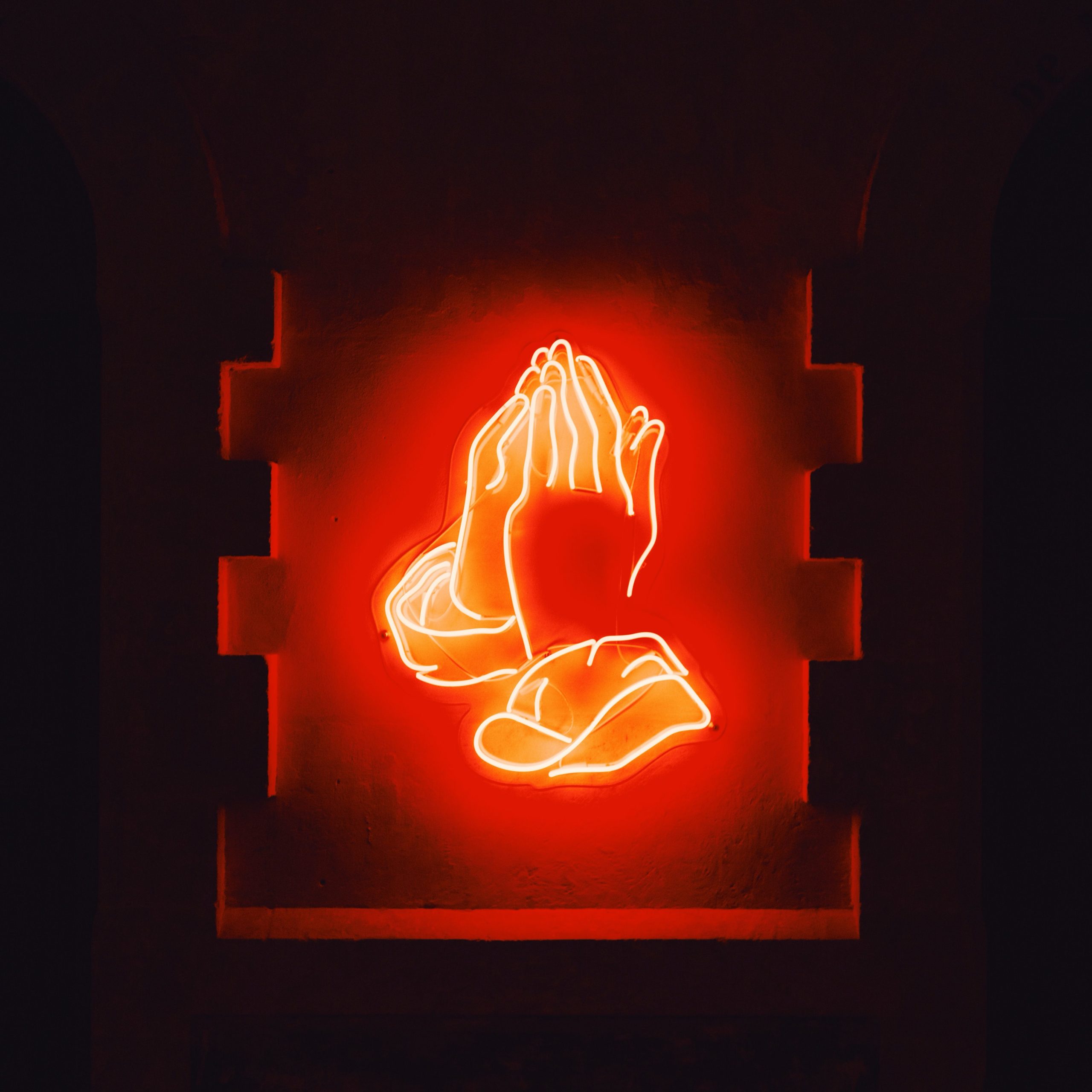
We’d like to call 🙏 the emoji of the three golden words. It is perfect for any context that involves any of the words (please, sorry, and thank you). You could apply 🙏 while responding with either of these meaningful terms and phrases. For instance, “Thank you so much! 🙏 “, “Please mail it to me, thanks 🙏 “, “So sorry 🙏”, “Could you do that for me, please? 🙏”
In any condition, we advise meaningful use of emojis. Send what you mean. This way you will always dodge the bullet of being misunderstood and also avoid the possibilities of wrecking an ongoing conversation (and in extreme cases, the relationship too) due to “emoji ego”.
You could also use this emoji in accordance with your individual and cultural connotation. But in such cases, it’s advised to back the emoji with transparent reference to the same. If not, there are chances the emoji may not be consumed in the same way it was intended.
When Should You Not Use 🙏?
The 🙏 folded hands emoji could have a slightly adverse and exaggerated side. This emoji, which authentically reads as thank you, may also read as thanks a lot, or other capitalized versions of the same expression (THANKS) if used in the wrong contexts, or with the wrong intentions.
Similarly, 🙏 must not be used when you’re sorry for something or someone, and should only be limited to being sorry about something and apologizing for the same. For example, “I’m sorry about that. I really am 🙏” is the acceptable and correct use of 🙏 as a sorry emoji as opposed to “So sorry for your loss 🙏” or “I’m sorry for all that I did 🙏”. Nope.
Such use-cases not only shred the conversation of its genuineness and convey an artificial sense of connection but also trivialize the immensity of the situation and very often add a negligible but visibly negative layer of drama to the virtual chat, mostly one that wouldn’t end/go well.
So, these virtual scenarios are when you shouldn’t be using 🙏.
What Does it Mean When Someone Sends 🙏?
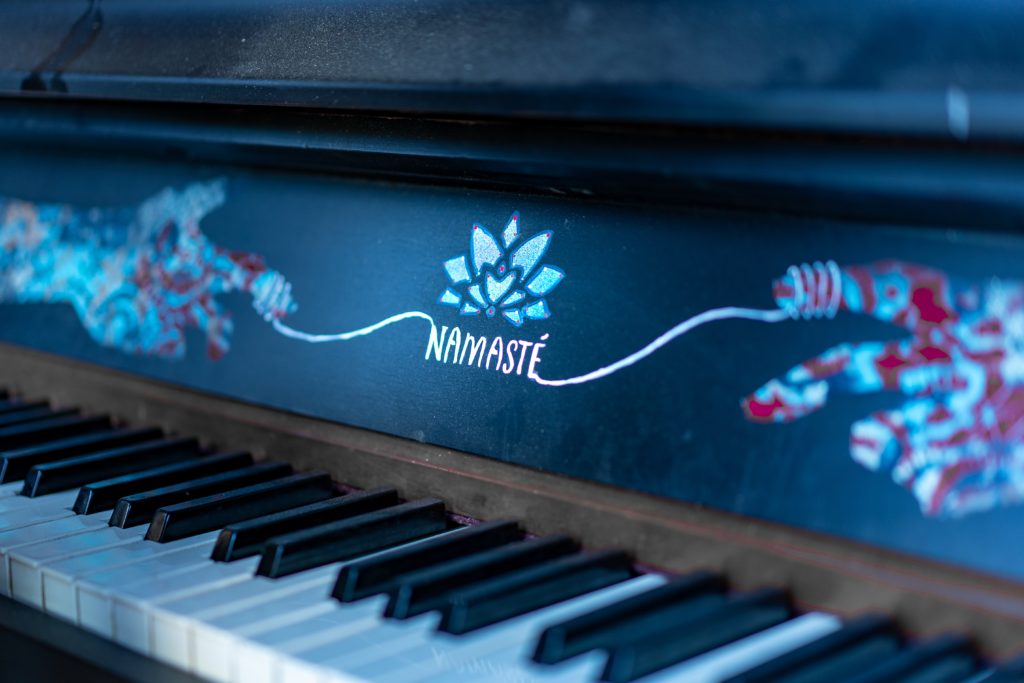
It totally depends on the conversation and also on the person sending it. 🙏 could suggest anything between the golden words or symbolize cultural meanings as upheld by the respective countries and cultures.
However, if you’re using 🙏 with cultural context, then clear-cut verbatim would be necessary, because this emoji signifies a general sense of respect, humility, and gratitude, and anything specific would need to be specified. As mentioned earlier.
Given the formal nature of the 🙏 folded hands emoji, it’s most likely to be used in formal occasions and conversations. This means 🙏 would reach you with a professional, aloof, and distant tone than with an intimate one.
It’s the emoji an unfamiliar or not very familiar person would send, with the intention of fulfilling the said necessities and fully expressing the intended emotion(s). Like, “Really appreciate your time. Thank you 🙏”.
Though 🙏 has an air of formality and a high wall plastered with a social image, it maintains a consistent, and healthy distance between people who don’t know each other, aren’t familiar with each other just yet, used to know each other, and need to/ happen to know each other.
So, if someone who doesn’t fit into any of these brackets still goes ahead and sends the 🙏 emoji, then there’s a slight chance that something may not be right or as right as it used to be. But, there are exceptions to everything, including this analysis.
What Does it Mean When Someone Uses Multiple 🙏?
If you’ve ever come across a text message that contains more than a single 🙏 folded hands emoji, a definitive reason behind this multiplicity would be extra emotion.
🙏🙏 or 🙏🙏🙏 would invariably suggest that the sender is feeling an extra sense of gratitude, groundedness, reverence, or devotion. It may also be proportionate to the conversational amount of pleading, begging, or requesting that’s articulated by the sender.
More the emoji, more the emotion, in such cases.
Is 🙏 a High-Five?
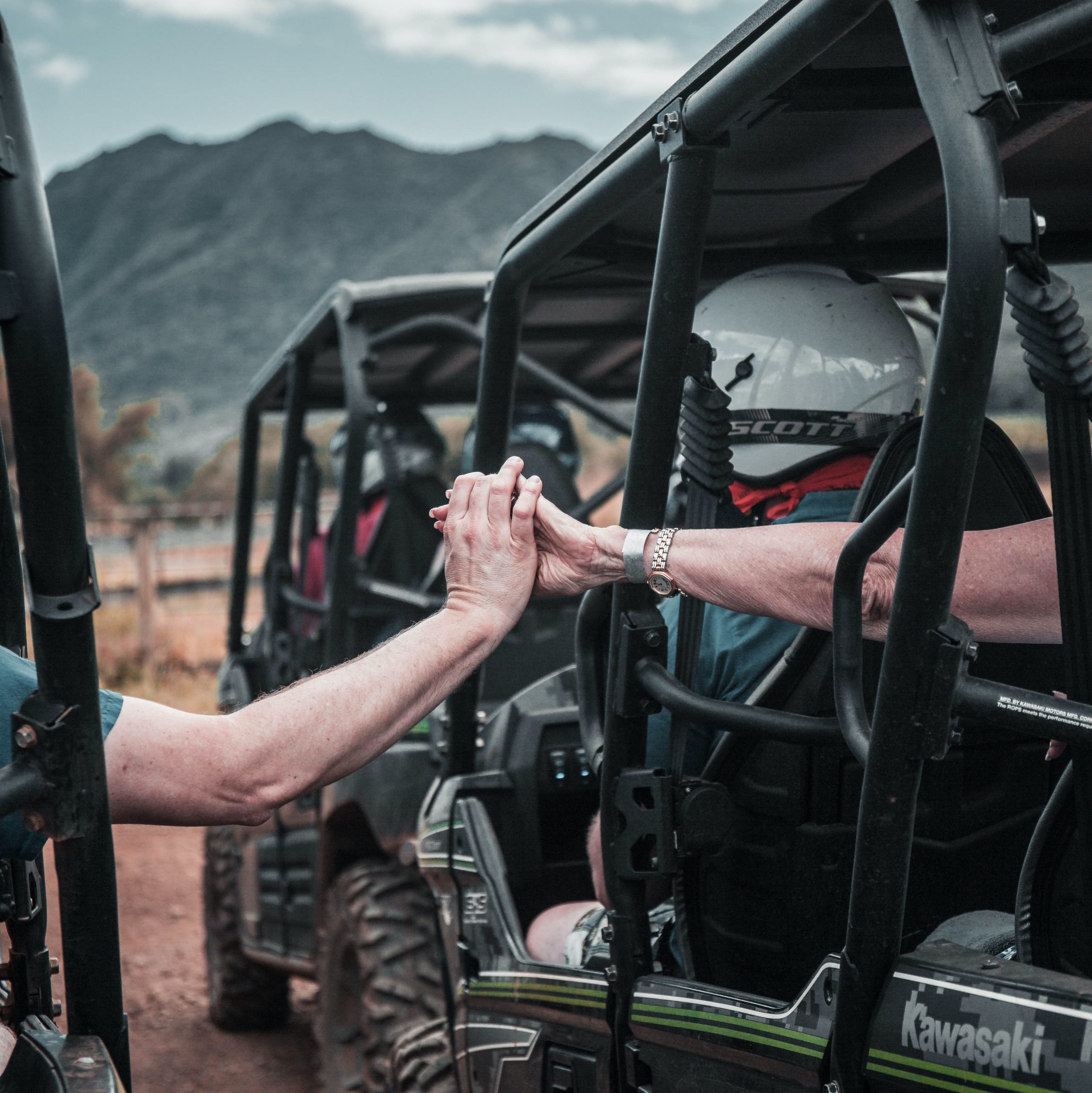
It’s only human to see different perspectives. 🙏 could be a pair of folded hands or it could be a high-five. They’re both correct.
🙏 can be single hands belonging to two different people, coming in for a high five, or it could be a single person self high-fiving. You know, the awkward ‘nobody loves meself high-five’.
But, referring to 🙏 as a high-five and using it as such only diminishes its magnitude of rich cultural importance and acknowledgment. Thus, risking offense to the existing reverence users may have for this gesture.
However, it ain’t politically wrong to use the 🙏 folded hands emoji as a high-five and if you are applying this emoji as a high-five, it’s best to use your words too. Like, “We’re a lot alike than I thought, man. High 5 🙏”. It would be read as a yoga pose, namaste, or an act of begging, otherwise.
What Else Does 🙏 Mean?
The folded hands emoji is also associated with strongly held sentiments and values apart from the universal and well-known ones. For instance, 🙏 is a mark of hope, faith, and belief in some countries, and not only a symbol of respect and polite mannerisms, as it’s popularly noted to be.
This pair of revering hands can also come to signify praise, exaltation, glorification, veneration, and a sense of honoring something or someone as well. In all cases, 🙏 is a gesture that conveys the act of humbling oneself before “the exalted one” in any measure and to any degree.
In Conclusion
The folded hands emoji is a positive emoji until it’s made to be otherwise. A pair of closely-held palms never has a vile intention or purpose in reality and neither does it in the emoji world.
The intention and purpose of the sender could cause all the variance in this emoji and its intonation.
🙏 is the emoji you would use in scenarios that aim to convey gratitude, respect, hope, prayerfulness, worship, reverence, an apology, sincerity, and modesty. Remember, 🙏 can easily go wrong and can be effortlessly smelled out when used with an incorrect objective, intentionally or not.